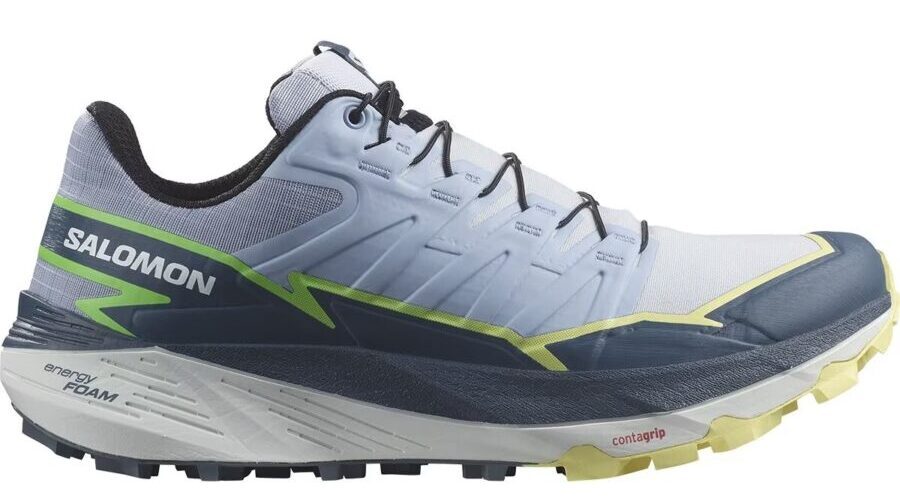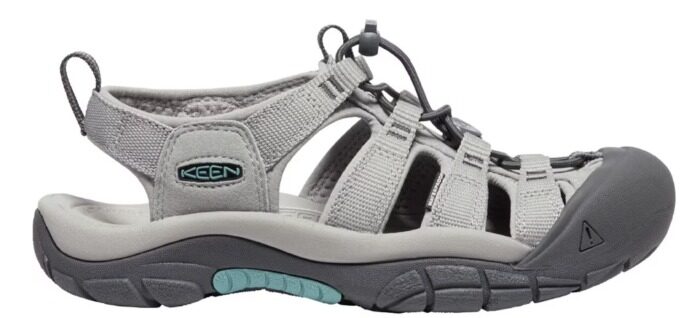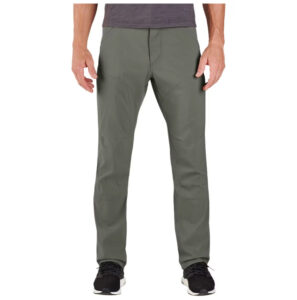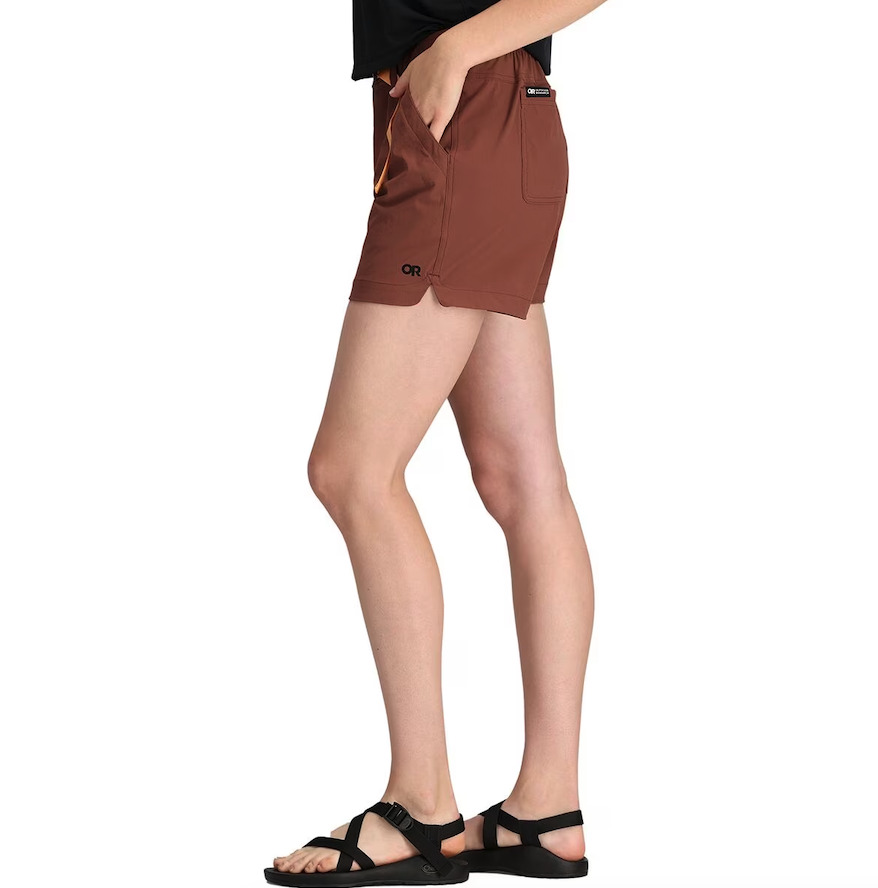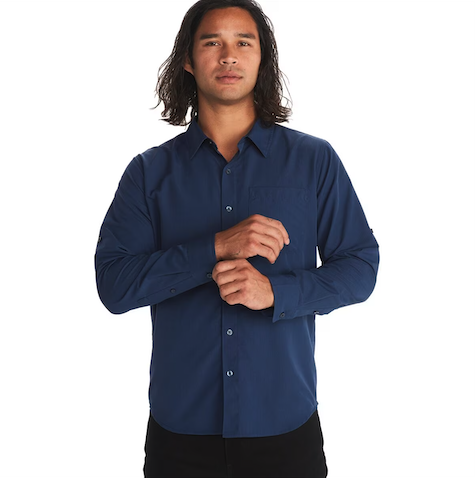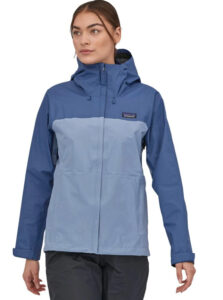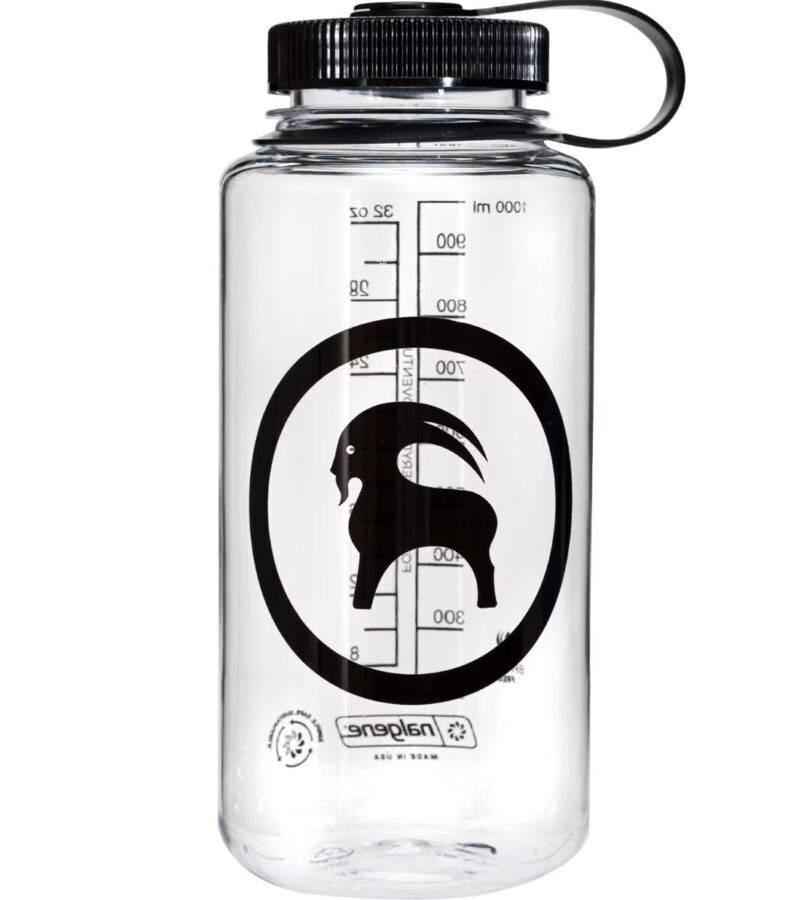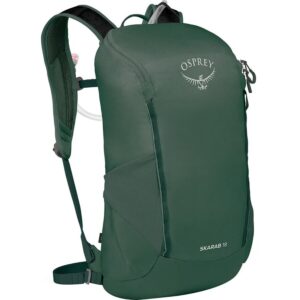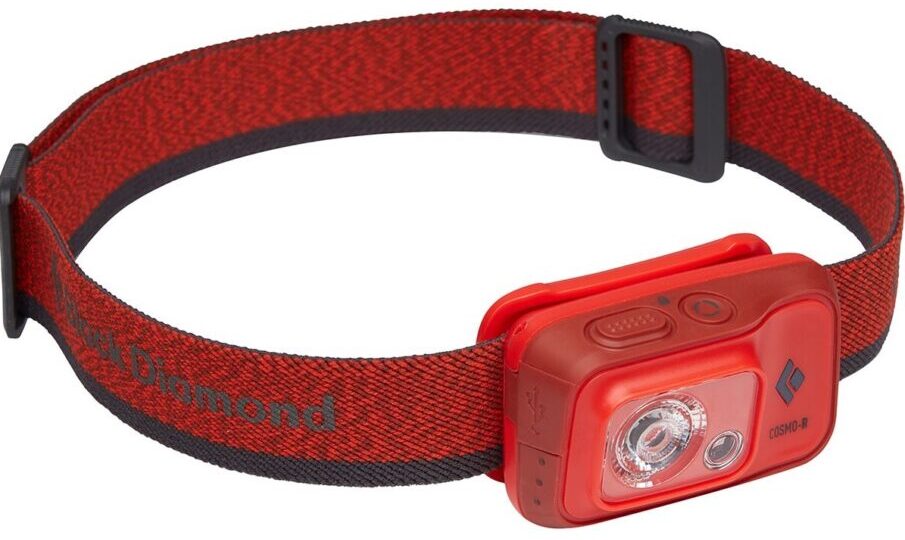Guide Favorites: What to Pack For Your Adventure
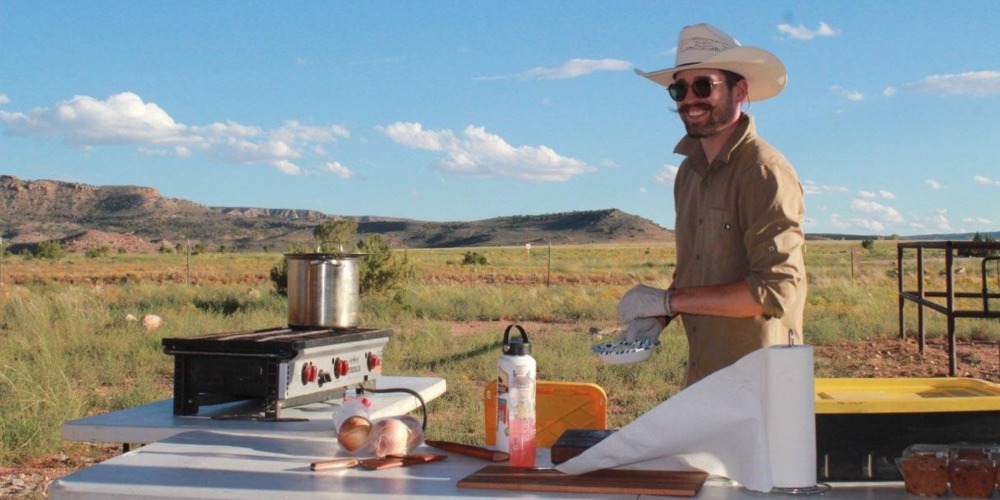
Posted: August 13, 2023 | Nick Polhill | Updated: July 11, 2024
So, you’re going on a hiking trip, and you’ve read every essential packing list out there. They say things like “synthetic shirt” and “moisture wicking socks” as if everyone knows what that means. You start shopping around, and find the gear isn’t cheap, and are unsure if it’s worth the investment.
As a MountainBased Guide, I’m here to share not only my preferences but also what our team prefers to pack for our trips so you can focus on just having a great time. I spend tour season living in my gear day and night. I have years of experience learning about gear from other pros in the industry, finding out what materials I like and what is going to hold up. Let me take you through what we bring on every adventure, from the ground up.
Womens Option: Thundercross Trail Running Shoe
Footwear
Shoes + Boots
Perhaps the most important piece of equipment is my footwear. A sturdy, purpose-built set of kicks is going to keep my feet comfortable, provide grip on the trail, and protect from the elements.
For most trips, our team really enjoys wearing trail running shoes while hiking. Specifically, Salomon trail runners. They grip like claws on any terrain, from scree to mud. Each step feels plush yet propulsive, with cushioning and tech that absorbs shock and rockets you forward. Plus, durable construction and protective features keep your feet happy wherever the trail takes you. Another, more minimalist option that is popular with my co-guides would be the La Sportiva Bushido. You also can’t go wrong with Hoka’s or Altra’s if you want lighter hiking shoes.
Have weaker ankles and want more support? We suggest trying out many of the boot options listed on Backcountry.
Our female guides prefer the Altra Outroad Trail Shoe. This shoe is designed to provide a smooth and stable ride on rough mountain trails. It has a generous amount of cushioning in the midsole for added comfort.
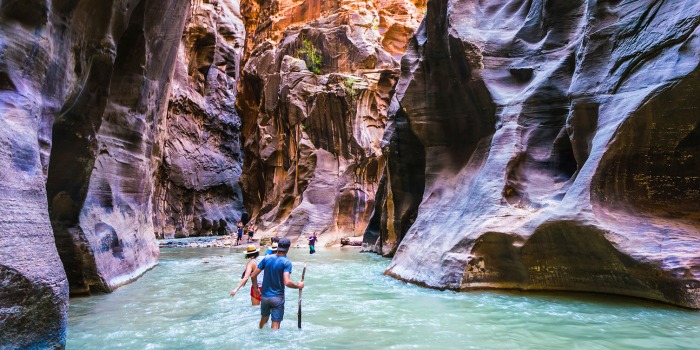
“The Narrows” in Zion National Park
Hiking Sandals
The options above work well on land but what about in a river? The most important thing to factor when selecting footwear for hiking in a river is making sure you have a hard toe box, sturdy soles and great breathability. Since rivers are filled with rocks and boulders, the more tough the shoe, the more enjoyable the hike! All of the options listed above work well in the river, however, if you want the perfect shoe for river usage, try the men’s and women’s Keen Newport H2 Sandal. We recommend this sandal on all of our tours that hike “The Narrows” in Zion National Park.
Womens Option: Newport H2 Sandal
Socks
Of course, a pair of shoes on land is not complete without socks. I opt for Smartwool Hike Light Cushion socks. The comfortable wool blend maintains its shape and doesn’t stretch like cotton when they get wet from snow or rain and won’t get as smelly either (which is a must, especially while traveling with others). The patterns are super fun, and they will last for ages! I’ve been using the same few pairs for over 5 years with no thin spots yet.
Bottoms
Pants
When it comes to pants, there are a few types you need to have on any trip. For starters, I like to have a pair of hiking pants for the cooler months, or for our Yellowstone + Grand Teton trips, when the temperatures can be cool all day. I hop in a pair of Kuhl Renegade pants. They are durable, water resistant, and breathe well while putting in the effort setting up camp or hiking down the trail. For women, we also strongly recommend Outdoor Research or Kuhl products. Our favorite is the Ferrosi Womens Pant. These flexible and breathable pants are known for their 5-star comfort.
Shorts
For the most part, though, I wear shorts. Any shorts of athletic material will work, as they will be quick drying and odor-resistant. If you are looking to pick up some hiking-specific ones, I like the PrAna Stretch Zion II Short. They are not too baggy and look good on the trail and in town. Our guides usually prefer shorts that land just above the knee, so the material doesn’t catch on brush or rock while navigating terrain. And, they are just way more comfortable. If you don’t need many pockets, running shorts work great! They’re lightweight, quite breathable, and of course, budget friendly! Our female guides prefer the Ferossi Shorts.
Finally, I like to bring a pair of comfy, warm pants for hanging out around the campsite, sleeping, and the drive home at the end of the week. For me, that is just a simple pair of sweatpants.
Tops
There are two categories of tops to consider – Shirts, and jackets. Let’s start off with shirts.
Shirts + Tanks
The goal of a MountainBased trip is, of course, to get outside and see the sights. And you know what’s outside? The sun. The sun is merciless. As such, I like to protect my body from the sun, especially the areas that burn the easiest and are typically most exposed. I reach for a long sleeve, UPF rated shirt to fend off the solar tyrant.
My go-to? The Marmot Aerobora. Full of little pinholes for breathability, this UPF 25 rated shirt has long sleeves and a collar for max protection. The sleeves also can be rolled and pinned up if you prefer to switch to short sleeves but want the long sleeve option. Here are some more of our favorite picks.
Like the long sleeves and collar, but want a women’s cut? Check out The Astroman from Outdoor Research!
Looking for more casual? I got you covered. The Stoic Venture Hoodie (for both Men and Women) is easy to slip on, and the sleeves can be pushed right up if you like. The built in hood also provides full head coverage to give additional protection. There are also great options out there for those who don’t like the extra material from the collars and sleeves. Patagonia makes a great tank in a women’s fit, and a simple tee in a men’s. Just make sure you are packing extra sunscreen if you go with these options!
Jackets
In the land of jackets, there are two areas of protection we like to consider – thermal and rain. For thermal protection I toss two jackets in my pack – the Polartec Power Grid Full-Zip Hoodie (for both Men and Women) and Patagonia Nanopuff (for both Men and Women). The Filament is very light and breathable, and the Nanopuff provides wind protection and steady heat retention. When combined these layers are more than the sum of their parts!
Womens Option: Torrentshell Jacket
For rain protection I use an old yellow Eddie Bauer rain jacket that they don’t make anymore. If I were to upgrade, though, I would go for the Patagonia Torrentshell (for both Men and Women).
Headgear
While your shoes on one end are giving you stability and protection from the ground, your headgear is going to protect your dome from the elements up top. This does not have to be anything fancy – it is going to get sweated through, blasted by the wind, and probably blown off once or twice. A regular ol’ ballcap you don’t mind getting messy is great to have. Additionally, a warm hat like a beanie is perfect for the cool evenings and mornings. For camping trips, it’s great to have on as you sleep, so you don’t lose too much heat from your head, while the rest of you is covered in a sleeping bag.
For those extra sunny days, I do wear a wide brim hat. I rock the Sunbriolet Sun Hat. This hat is light, can be crushed and jammed into a day pack or luggage, and has vents on the sides to let heat out.
Other Gear
Water Bottles + Bladders
Bringing refillable water bottles for hiking may seem super simple, but there are still some things to consider. What kind of bottle? A bladder perhaps? How much should I carry?
The most important point here is the water capacity. On any of our trips, you should be able to carry a minimum of 2 liters of water. Our hiking locations are dry and hot, and you sweat out water much faster than you realize, as it evaporates quickly. Some hikes also have us on the trail away from fill-up spots for several hours at a time.
With that in mind, how you carry that much water is a matter of personal preference. I personally just use a 3L Reservoir from Deuter that fits in my pack. Having quick access to that water via the hose without having to pull a water bottle out of a side pocket or the bowels of the pack encourages more frequent water consumption. However, filling them up can take extra time as they can be difficult to put back in the backpack when filled.
I will also often use a 32oz water bottle as backup on the trail or in the car. It’s cheap, lightweight, and a great canvas for the stickers you pick up at all the parks. Unfortunately, the lack of insulation means that the water can get warm quick if the bottle is in the sun.
If that warm water is bothersome, you can use insulated water bottles. The downside with insulated bottles is that they are heavy, bulky, and far more expensive than a bladder or standard water bottle.
Daypack
This is essential for everyone to have! Even if you are coming with a friend or group, each person in the group should have their own pack. This will allow you to carry your own water and gear like extra layers for rain or cool weather. It does not need to be a large pack – 15 to 20 liter capacity should suffice. Whatever pack you bring, though, don’t go reaching for that cheap drawstring pack sitting in the back of your closet that you got for free at your college orientation day. The thin straps will cut into your shoulders from the weight and break easily.
A couple of favorites for both men and women are the Osprey Skarab 22L, and the Gregory Skarab 18L. If you’d like to dig a little deeper on specifics, check out this Outdoor Gear Lab article for help picking out the right one for you!
Sun Protection
Sunglasses, sunscreen, lip balm. You’re gonna need it, regardless of which trip you come on, whether it be our Mighty Five Camping trip in southern Utah or our Signature Yellowstone + Grand Teton Lodging trip up in northern Wyoming. At the elevations these trips are at, the sun is very intense and does not take much time to crisp one up!
Headlamp
Cosmo 350-R is an inexpensive, but plenty bright lamp for finding your water bottle in your tent or late night excursions to the restroom. It will serve you better than a phone flashlight and has a red light that won’t blind your tent-mate.
Toiletries
For your sake and the sake of everyone you will be sharing a van with for the week, please-please-please bring your toiletries. I recommend you bring a case like the Grizzly Kit Bag from Kavu. It’ll be easier for the airport, and sometimes the shower house is a short walk from our campsite.
Oh, and don’t forget to bring a towel!
Powerbank
Much of our camping trips are spent far away from outlets. Having a battery like the Anker 325 Power Bank, especially on our Mighty Five Camping tour, is essential to keeping your devices alive.
What You Won’t Need
Keep in mind that if you come on a trip with us we will provide these essential items: spacious tents, thick sleeping pads, warm sleeping bags, comfy pillows, and all the kitchen needs. We also bring a plethora of snacks, so unless you have a very specific preference, there is no need to fill your luggage with granola bars.
Choose the Right Materials
The stuff your clothes are made of can be the difference between comfort and safety, and, well, discomfort and danger. It is best to avoid cotton while hiking, as it absorbs and holds on to moisture and won’t let it go quickly. This often causes the garment to deform, and it can rub the wrong way. Cotton as a material for socks is particularly bad, as they will leave you with blisters on your feet when they get wet from sweat, stretch, deform, and rub on your feet. Choose materials like wool and synthetics instead. These dry faster, hold their shape, and stay warmer than cotton when wet, which is a must for socks and underwear in the cooler months. Bottom Line: Avoid cotton for your active clothing. Makes for great comfy camp clothing though!
Happy Adventuring
It’s essential to bring the right gear on a hiking trip in order to have a comfortable, safe, and enjoyable experience. The right shoes, socks, pants, and shirts will help you stay comfortable and protected from the elements. The right backpack, hat, and gloves will help you carry all of your gear and be prepared for any challenges that may come your way. By choosing durable, comfortable, and suitable gear, you can focus on enjoying your adventure and making the most of your time on the trail. We hope this information has been helpful in understanding the importance of choosing the right gear for your hiking trip, and that it will help you have a memorable and rewarding experience on the trail. Do you have any questions about what gear to pack for your upcoming trip?
[social-share]
